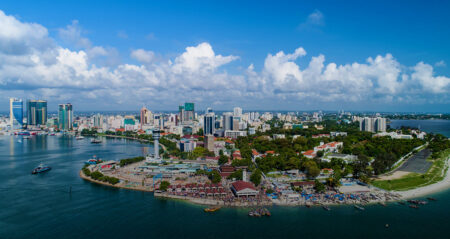- A report by Turner & Townsend revealed that the global economy is facing intense challenges, despite expecting a robust recovery in 2022 following two tough years of the COVID-19 pandemic
- The war in Ukraine and renewed COVID-19 lockdowns in China have destabilised the supply chain further, causing widespread disruption
- Higher energy costs and climate change-induced floods, storms and fires are all combined to test the resilience of the global economy
A new report has indicated that the global economy is facing intense challenges, despite expecting a robust recovery in 2022 following two tough years of the COVID-19 pandemic.
The Global economic outlook: A disrupted recovery by Turner & Townsend revealed that despite 2022 starting on a solid base, the war in Ukraine and renewed COVID-19 lockdowns in China have destabilised the supply chain further, causing widespread disruption.
The report further noted that higher energy costs and climate change-induced floods, storms and fires are combined to test the global economy’s resilience.
“The global economy now finds itself in uncertain territory, with inflation expected to rise and economic growth anticipated to slow, notably,” the report said.
The June Organisation for Economic Co-operation and Development (OECD) Economic Outlook said the global Gross Domestic Product (GDP) growth grew by 5.8 per cent in 2021. However, the change is expected to drop to 3. (https://glasshousefarms.org) 0 and 2.8 in 2022 and 2023, respectively, as new challenges come to the fore.
According to the report, some market expectations have improved, with Argentina, Turkey, and Australia set to experience greater growth than previously expected, increasing by 1.1, 0.4 and 0.1 percentage points, respectively.
However, the growth rates in the world’s top three largest economies are expected to fall. The United States of America (USA), China and Japan’s economic growth may reduce by 1.3, 0.7 and 1.7 percentage points, respectively. Many of the hardest-hit economies are also in Europe, with direct links to the supply chains of Russia and Ukraine.
Inflation hit global economies
Surging demand over the past 12 months for consumer goods, building materials and manufacturing inputs have contributed to ongoing supply backlogs and delays.
According to the report, spending remains strong in many regions, maintaining the pressure on the global supply chain.

Hold-ups at ports and rising shipping costs are a key part of the problem. The world’s largest ports in Shanghai and Ningbo are only now beginning to see the easing of COVID-19-related restrictions.
“With freight movements hampered for months, and as suppliers struggle to ship all of the delayed back orders, the pressure in the shipping system is intense. Demand for vessels is likely to add further to shipping costs.”
Tanzania GDP could slow down to 2.5 per cent, World Bank
Impact of invasion of Ukraine
The report further notes that Ukraine’s war exacerbates global supply chain stress.
Exports of maise, wheat, sunflower oils and fertilisers from Ukraine and Russia have stopped, causing higher prices as importers from North Africa and the Middle East are forced to compete for food imports from other markets. Food price inflation will continue until the conflict is over and agricultural production can resume in Ukraine.
Higher energy costs are also occurring as a result of the Russian sanctions, which are disrupting the supply of oil and gas. Transport costs have surged worldwide.
In September 2021, before sanctions were implemented, container freight rates were, on average, five times more compared with the pre-pandemic period (FBX Global Container Freight Index).
Now, as supply chain bottlenecks begin to ease, container freight rates have decreased to around four times pre-pandemic costs but are being prevented from falling further because of high fuel costs.
The increase in container rates has been even more pronounced on key routes such as China to the USA (McKinsey).
In the US, West Coast ports remain congested with shortages of berths, laydown space, crane operators and truck drivers.
US businesses have responded by increasing inventories by 14.0 per cent year-on-year to March 2022 (US Census) to try and shortcut the supply chain, but this has only added further pressure.
Bottlenecks in the supply chain will likely continue to plague the global economy in the medium term.
In this context, many businesses realise that the cost savings produced by outsourcing production internationally have become of secondary importance to maintaining business continuity.











